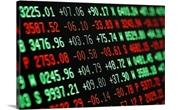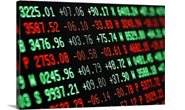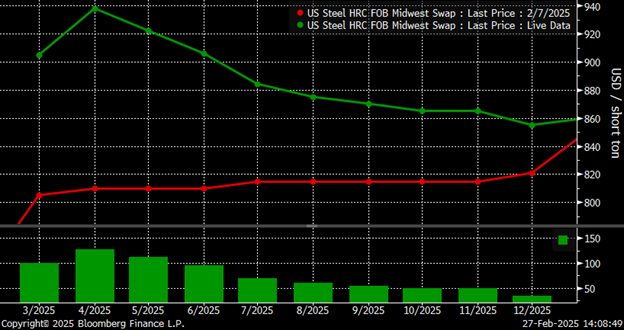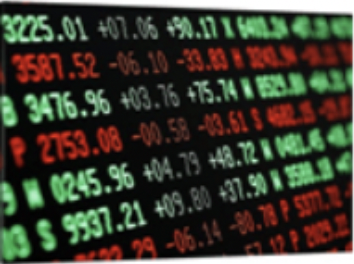Futures

Thin Summer Markets in Hot Rolled Futures
Written by Jack Marshall
July 20, 2017
The following article on the hot rolled coil (HRC) steel and financial futures markets was written by Jack Marshall of Crunch Risk LLC. Here is how Jack saw trading over the past week:
Steel
HR futures prices have moved $12-$27/ST higher on very light trading volumes this past week. In spite of the higher HR futures prices, Q4’17 HR last traded at $640/ST[$32/cwt] up $20/ST in the week. Buyers continue to bid at or above the previous trade prices, mainly driven by expected mill price increases and the anticipated tariffs that might result from the U.S. DOC Section 232 investigation report. Concern over low service center inventories of HR, as well as potential supply constraints, have lead natural HR sellers to continue moving their offers higher. Last week, HR futures curve values were flat at $620/ST for near, middle and far end of the curve. This week the curve is slightly backwardated with the front up over $20/ST[$1/cwt] and the back up over $12/ST[$0.60/cwt].
Below is a graph showing the history of the hot rolled futures forward curve. You will need to view the graph on our website to use its interactive features; you can do so by clicking here. If you need assistance with either logging in or navigating the website, please contact our office at 800-432-3475 or info@SteelMarketUpdate.com.
Scrap
Current scrap demand for both prime grades and obsolete, both domestically and for export, have also been price supportive for HR futures. Recent higher futures prices in 80/20 to just north of $300/MT have yet to be followed by any physical cargoes trading above $300/MT out of the U.S. However, higher export prices have helped keep obsolete scrap prices well supported. BUS prices rose, helped by delivery issues via rail and lower auto scrap availability due to plant maintenance. This week Q4’17 BUS traded at $355/GT, which is only $11 below the latest July index settlement and flat to the previous month’s index. Hence the backwardation in BUS has been compressing. The spread between BUS and HR futures is currently running between $280 and $290 for most periods.
Below is another graph showing the history of the busheling scrap futures forward curve. You will need to view the graph on our website to use its interactive features; you can do so by clicking here. If you need assistance with either logging in or navigating the website, please contact our office at 800-432-3475 or info@SteelMarketUpdate.com.

Jack Marshall
Read more from Jack MarshallLatest in Futures

HR Futures: Market at crossroads after turbulent run
The market appears to be pausing after a turbulent run. But tension remains just beneath the surface. With net long positioning still elevated, sentiment-driven selling could quickly reignite volatility. Still, supply constraints and limited imports are laying the groundwork for a resilient physical market. This moment of calm feels more like a crossroads than a conclusion.

HR Futures: Traders’ views mixed as market navigates tariffs
A look at the HR futures market.

Market pressures trigger HR futures reversal
Market dynamics are shifting rapidly, with futures pricing diverging from physical fundamentals, creating a complex landscape for steel traders.

HR Futures: Correction in market after big rally
Another eventful week in the physical and financial steel markets is coming to a close, but with a markedly different tone than the last update at the end of February.

HR Futures: Market drifts lower on light volume
Over the past couple of weeks, Midwest HRC futures have been drifting lower on light volume. This begs the question if the rally has run out of steam, or is it catching its breath after ripping roughly $150 in less than two weeks? The April CME Midwest HRC future made an intraday high at $976 […]


